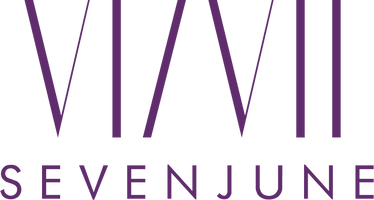ENGAGEMENT RING Q&A
I'M READY TO GET ENGAGED. WHERE DO I START?
SCHEDULE CONSULTATION
If you’re looking for a ring you’ve already got the hardest part figured out and that’s finding a love to spend your life with. Take a deep breath. Most people are so thrilled to get engaged that you could put a ring pop on their finger and they would love you just the same. We're guessing you can do a little better than that though, so here are some things to consider…
Timeline: You should give yourself 6-8 weeks from your proposal date to begin the engagement ring process. Custom settings can take anywhere from 2-4 weeks to create after your diamond has been selected. All SevenJune rings are made by hand in Los Angeles.
Budget: Put together a number that you are comfortable spending, while acknowledging that this is a once-in-a-lifetime purchase and potential family heirloom. Also, keep in mind that you will be responsible for insurance and wedding bands. Unfortunately, we cannot accommodate requests for financing. We accept wire transfer, cashier's check, and credit card payments. The center stone is invoiced on selection. The second payment is for the mounting, approximately 4 weeks later. Start saving as soon as possible and don’t let anyone pressure you. Take your time so that you have a healthy budget to work with.
Style: You know your partner. Are they romantic or sporty? Showy or reserved? Fashion forward or classic? Do they wear a lot of yellow gold jewelry or more white metals? Make note of their preferences and any details that can help tailor the ring to their taste. Enlist the help of a friend to get some intel on styles or diamond shapes that they like. Our advice on design is to keep it simple and timeless. Trends come and go, but this ring is forever.
One final note: Don't forget to get your partner's finger size!
We service with the utmost confidentiality and discretion and welcome preliminary appointments to discuss style and budget.
What About The "4Cs"?
The "Four Cs" stand for Color, Clarity, Cut, and Carat weight as indicated by the Gemological Institute of America (GIA).
Color – Generally we want you to stay in the D-J color range. D-F being “colorless," G-I “near colorless," J with “faint” color. Depending on the shape of the stone, different colors are more acceptable. Diamonds with large facets can carry lower color. For stones with small concentrated facets, higher colors are ideal.
Clarity – Clarity refers to the type and position of the inclusions inside the diamond. Your GIA lab report will contain a “plot,” or a map, of the inside of the stone, for your reference. This plot is your diamond's "fingerprint" as seen under a microscope or 10x magnifying loupe. Since you won’t be carrying a 10x loupe every day it’s our preference to select a diamond that is “eye clean,” meaning you can’t see ANY inclusions with your naked eye.
Cut – The cut of the diamond is the factor that “fuels a diamond’s fire, sparkle, and brilliance.” A GIA cut grade is only available on round brilliant diamonds at this time. Anything that’s not a round brilliant is considered a "fancy shape." Polish and Symmetry are the considerations on fancy shape diamonds but they are less important. In fancy shapes you want to look for diamonds that are pleasing to the eye with graceful outlines and even faceting, among other factors.
Carat Weight – Carat is the unit by which a diamond is weighed. One carat is defined as 200 milligrams. With everything else being equal, diamond prices increase by weight, but diamonds of the same weight can have different values and prices based on their other Cs.
We are available by appointment to review your options and offer the perfect combination of factors for your diamond.
Popular Diamond Shapes


